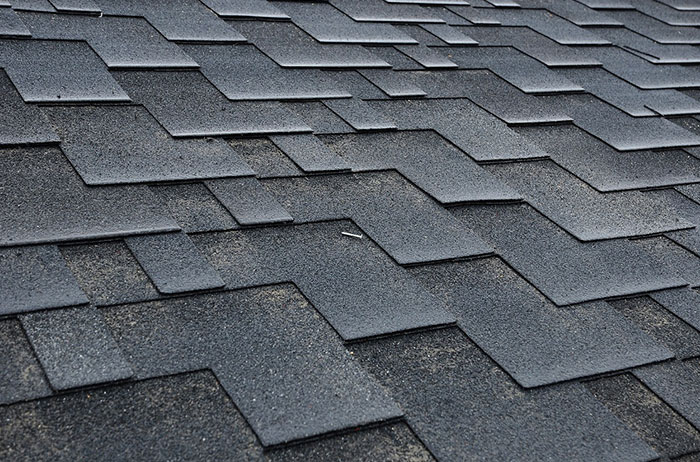Roofs being the most exposed part of a building, usually face a relentless battle against the elements. Rain, wind, and sun relentlessly batter them daily, year after year.
However, even the mightiest of roofs can develop weaknesses over time, leading to the notorious culprit of household headaches: roof leaks. Understanding the most common areas where leaks occur is key to preventing costly damage.
In this article, we will explore the most common areas where leaks can occur on your roof.
-
Around the chimney
Leaks tend to easily occur between those thin metal strips that safeguard roof intersections around the chimney. Normally, the metal strips form a vital seal between the roof and chimney, with one side tucked beneath shingles and the other securely nailed into place. Over time, however, this crucial defense can falter, giving way to cracks and gaps.
When your roof flashing gets compromised, water will easily infiltrate your home. Therefore, it is wise to conduct an annual inspection of your chimney. Not only can missing or damaged flashing lead to leaks, but other factors may also contribute.
Condensation, cracks in the chimney crown, and improperly installed flashing can also contribute to water leaks. You can easily keep your roof in check by scheduling a thorough inspection as constantly as possible.
Don’t underestimate the importance of maintaining your chimney and the flashing encircling it. Take proactive measures, such as annual inspections. It can save you from the possibility of water leaks and costly repairs.
-
Around windows and skylights
The areas around windows and skylights are also susceptible to leaks. Despite the natural light and beautiful views they offer, these areas can quickly become frustrating.
Leaks around skylights often stem from two primary causes: improper installation and worn weather-sealing along the skylight edges. When a poorly fitted skylight, water can infiltrate the sides and the rubber seal around the glass.
It’s worth noting that most skylight leaks are attributed to flashing issues or inadequate installation rather than faults in the glazing.
To safeguard against leaks, you should regularly inspect your skylights, especially after heavy storms. By staying vigilant and addressing any signs of water intrusion promptly, you can preserve the integrity of your skylights and prevent potential damage to your home.
Ensure that the installation is secure, and check for any indications of worn or deteriorated weather-sealing.
-
Vent pipes
Vent pipes can be another potential source of troublesome leaks. These pipes, commonly known as plumbing vents, serve the purpose of releasing air from homes. They are always equipped with flashing and a rubber boot to seal the top. As a result, they can easily fall victim to the wear and tear inflicted by the elements.
When they begin to deteriorate, the rubber boot can quickly wear out. So, it is essential to conduct regular inspections to check the condition of this rubber boot because once it begins to wear out, your roof becomes more susceptible to leaks.
However, you should also note that the causes of leaks around the vent may differ since there are various vents. There are ridge vents, box vents, and wind-turbine style.
While the above vents tend to be more prone to leaks due to wear and tear, other roof vents may be susceptible to storm damage or high wind conditions.
Thus, it is necessary to consult a professional roofer to diagnose and resolve any vent-related leak issues accurately.
Overall, proper care and attention to vent pipes can help safeguard against leaks, ensuring the longevity and functionality of your roof. Regular inspections, maintenance, and timely repairs are key to mitigating the risks of vent-related leaks.
-
Missing or broken shingles
Areas with missing or broken shingles are sure places where roof leaks occur. This is because they make up the outermost layer responsible for shielding your home from harsh weather conditions.
When there are storms and strong winds, they can forcefully detach shingles, leaving vulnerable areas exposed and susceptible to water infiltration. Hail or falling debris during these weather conditions can further penetrate the roof.
Consequently, all of these lead to damages that will require immediate repairs. So, after a storm subsides, you should ensure a visual inspection of the roof. It can help you spot any missing shingles that may require attention.
In addition to missing shingles, broken shingles also contribute to leaks, particularly in older homes or those with original roofing. Storms and high winds have the power to dislodge shingles, creating hidden exposed spots that may go unnoticed without professional assistance.
Whether a few shingles or a larger section is compromised, leaks resulting from severe storms often demand extensive shingle repairs.
In summary, regular roof inspections and timely repairs are crucial in addressing missing or cracked tiles and shingles. By proactively maintaining your roof’s integrity, you can prevent potential weaknesses that may lead to further harm to your property.
Conclusion
Identifying and addressing the most common roof leak areas is essential to maintain the integrity of your home and prevent costly damage. Key areas to watch for include damaged or missing shingles, deteriorating flashing, clogged gutters, cracked chimney crowns, and poorly sealed skylights or vents.
If you suspect a leak in your roof or need maintenance assistance, consider contacting Shoreline Roofing. Our team of experienced professionals can provide expert guidance, thorough inspections, and reliable repairs to ensure that your home remains safe and protected from the elements. Don’t let a small leak become a major issue – contact Shoreline Roofing today for all your roofing needs.



